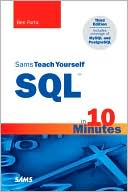Pragmatic ADO.NET: Data Access for the Internet World
"This is my favorite book on ADO.NET. The author clearly has an extensive understanding of the subject matter. It is useful not only for expert data access programmers but also for weekend code warriors."\ —Glenn Thimmes, Senior Software Engineer, New Dawn Technologies.Formerly Develop Support Engineer (WebData), Microsoft Corporation\ Pragmatic ADO.NET is a practical guide to using the first data access services designed specifically for Web-based applications. This tutorial provides...
Search in google:
Pragmatic ADO.NET is a practical guide to using the first data access services designed specifically for Web-based applications. This tutorial provides developers with a clear introduction to and practical solutions for the effective use of ADO.NET as well as the motivation for its use.The book begins with a concise history of Microsoft's Universal Data Access strategy and the evolution of data access that has led us to ADO.NET. The core of the book demonstrates how and why to work with ADO.NET to interact with databases and the rest of the .NET framework. In addition, readers learn by example the best practices for using ADO.NET in building scalable, high-performance systems. The book includes numerous reusable code samples in C#. Pragmatic ADO.NET ends with an appendix detailing strategies for migrating from ADO to ADO.NET.Readers discover how to: Work with data in a disconnected way Connect to databases through ADO.NET Use Command objects Use the DataReader Construct DataSets Create and use Typed DataSets Manipulate data with DataSets Update databases from DataSets Integrate with XML Use data binding Optimize performance and scalabilityThe combination of concise coverage, helpful explanations, and detailed examples makes Pragmatic ADO.NET an important guide for all developers looking to gain a working knowledge of ADO.NET.
ADO.NET is not ADO. This is the most important fact that this book tries to convey. Understanding ADO.NET is not just about how to get database data or how to update the database. It requires an understanding of why it was built. ADO.NET takes a completely different approach in accessing databases than older Microsoft data access strategies. This is not your fatherUs ADO.\ This book intends to be neither a reference nor an "Internals" book of how ADO.NET works. It is geared towards helping day-to-day developers get their jobs done. This book intends to give clear advice on how to use ADO.NET.\ Intended Audience\ This book is squarely aimed at developers who have a basic understanding of .NET and of databases. It is intended to help day to day developers get their job done. It does not assume prior experience with ADO, though it does build somewhat on that knowledge if it exists.\ Part I The Basics of ADO.NET\ Part one is intended to get you started with the basics.\ Chapter 1 Why ADO.NET\ Before the book explains how to work with ADO.NET, it explains why ADO.NET was written. Chapter one discusses the history of Microsoft Data Access to explain how we got to ADO.NET.\ Chapter 2 Getting Connected with ADO.NET\ Before we can do anything with a database, we must know how to connect to them. Chapter two is all about getting connected to databases through ADO.NET. This includes a discussion of how connection strings work, connection pooling in a variety of Managed Providers, patterns for connection creation and how to minimize connections to the database.\ Chapter 3 Commanding the Database\ Ouronly interface with the database is to issue commands and deal with the result of those commands. This chapter focuses on how to get the database to do work for us by using Command objects. This includes explanation of how to use the Command objects with simple SQL statements, parameterized queries, stored procedures and batch queries.\ Chapter 4 Reading Data\ DataReaders are ADO.NETUs method for getting tables from the database. In chapter four, the book explains how to use DataReaders to access database information and shows an example of writing a class that uses the DataReader as its data source.\ Part II All about DataSets\ The DataSet is the heart of ADO.NET. To use the DataSet effectively, we must examine how it can be used to solve our day-to-day problems.\ Chapter 5 Constructing DataSets\ This chapter explains exactly what DataSets are and why you should use them. It covers the many ways to make DataSets including using DataAdapters, XML and code to create them. A complete discussion of how to use DataSet schema is also included in this chapter.\ Chapter 6 Typed DataSets\ Typed DataSets are a useful tool to allow you to have code that adapts to changing schema. Chapter six explores this new programming model where we create Typed DataSets and use them as the basis for business logic layers that are typically all hand-written. This chapter also shows how to create Typed DataSets from within Visual Studio.NET as well as from the command-line.\ Chapter 7 Working with DataSets\ Now that we know how to create our DataSets, we need to understand how to use them to manipulate data and how the data is structured inside them. Chapter seven explains how the DataSet model works and how you can use it to get your job done.\ Chapter 8 Updating the Database\ Once we have manipulated data within a DataSet, we have to have a way to update the database with those changes. Chapter eight walks you through how to plan for disconnected concurrency. It includes examples of using the built-in optimistic concurrency and how to implement pessimistic and destructive concurrency. In addition, the chapter discusses how to handle concurrency violations and gives concrete examples of one solution for dealing with concurrency violations.\ Part III ADO.NET in Action\ Now that we know how to access data, manipulate it and update the database with the changes, we need to know how we can get ADO.NET to interact with the rest of the .NET framework.\ Chapter 9 ADO.NET and XML\ XML is just data. ADO.NET is the data framework for .NET. These two facts come together to show why ADO.NET is so tightly integrated with the XML framework to allow for database data to be commingled with database data. Chapter nine explores the way to treat each type of data like their brethren.\ Chapter 10 Data Binding with ADO.NET\ In .NET, there are two forms based technologies Windows Forms and Web Forms. Luckily, ADO.NET containers (DataReaders, DataSet, and DataTables) all support direct data binding. Chapter ten shows you how.\ Chapter 11 Scalability & Performance\ This chapter brings it all together with concrete design suggestions for how to build scalable, high performance systems. In addition, the chapter lists a set of best practices for using ADO.NET and database development in general.\ Appendix Migration Strategies for ADO to ADO.NET\ We cannot pretend that all .NET code will be all new development. There are many developers out there who have code to migrate to .NET. This appendix lists a number of strategies for living in a mixed system where you need to have ADO.NET data structures reading ADO structures and vice versa.\ \
ForewordPrefaceAcknowledgmentsPt. IThe Basics of ADO.NET11Why ADO.NET32Getting Connected with ADO.NET213Commanding the Database534Reading Data81Pt. IIAll about DataSets1075Constructing DataSets1096Typed DataSets1517Working with DataSets1878Updating the Database217Pt. IIIADO.NET in Action2619ADO.NET and XML26310Data Binding with ADO.NET29311Scalability and Performance313AppADO Migration Strategies331Index347
\ From Barnes & NobleThe Barnes & Noble Review\ ADO.NET isn’t just the newest in Microsoft’s endless line of database access technologies: It’s a whole new way of thinking about data access in distributed and Internet-based applications. ADO.NET’s true power lies in its support for disconnected database programming, which dramatically reduces database connection loads and enhances scalability and performance. That’s the type of ADO.NET programming Shawn Wildermuth wants to teach you. \ Wildermuth begins by illuminating ADO.NET’s approach to connections. ADO.NET is designed to open and close connections repeatedly, rather than leaving them open: A Connection class represents a single connection to a data source that can handle multiple open/close cycles. Wildermuth shows how to use ADO.NET’s sophisticated connection pooling, and how to create a ConnectionFactory class for doling out new connections at will, without redundant code.\ Wildermuth next introduces ADO.NET’s commands for working with databases -- covering techniques ranging from wrapping stored procedures to writing parameterized queries. There’s a full chapter on using ADO.NET DataReaders to efficiently read data returned by SQL queries, followed by comprehensive coverage of DataSets -- the real heart of ADO.NET.\ Here, Wildermuth covers everything from the basics (creating DataSets from databases or from XML) to Typed DataSets (which radically simplify the creation of business object layers). There’s also a full chapter on concurrency and some other sticky database update problems.\ From data binding to improving scalability, Wildermuth offers practical examples and real clarity. You won’t just “get by” with ADO.NET: you’ll learn to think about data access the way ADO.NET does -- and leverage all the power ADO.NET promises. Bill Camarda\ Bill Camarda is a consultant, writer, and web/multimedia content developer. His 15 books include Special Edition Using Word 2000 and Upgrading & Fixing Networks For Dummies®, Second Edition.\ \ \
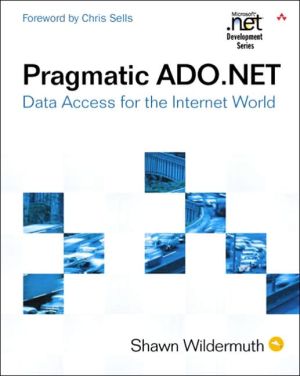
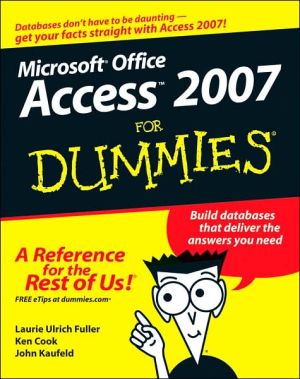

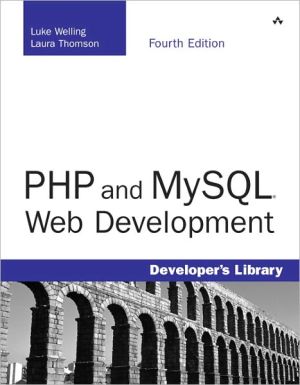
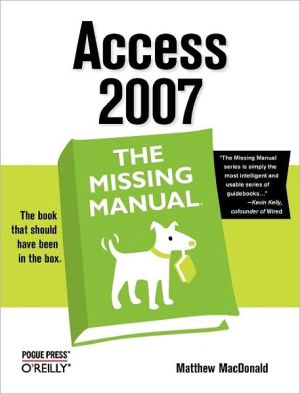
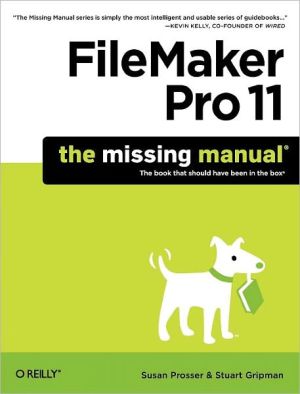
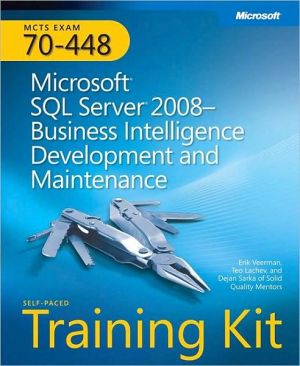
![SQL Queries for Mere Mortals: A Hands-on Guide to Data Manipulation in SQL [For Mere Mortals Series] SQL Queries for Mere Mortals: A Hands-on Guide to Data Manipulation in SQL [For Mere Mortals Series]](/application/data/covers/44/31/9780321444431.jpg)
